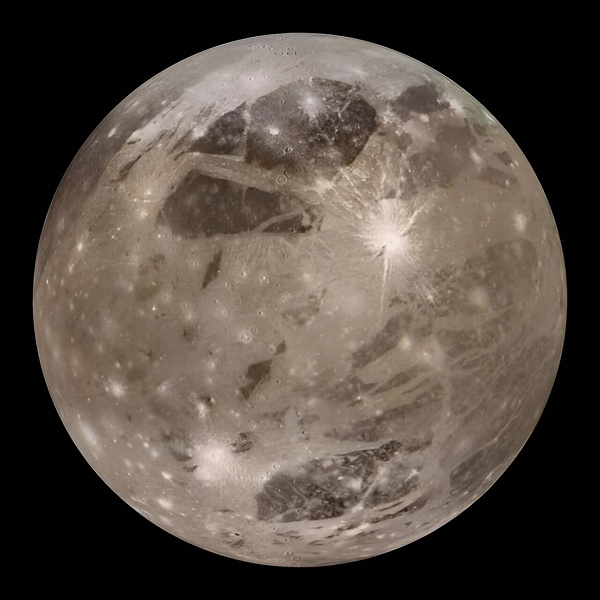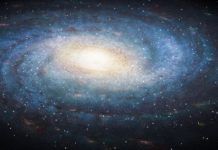New observations from the JWST space telescope have revealed several details about the surface of Ganymede, Jupiter’s largest moon.
Ganymede is almost a planet, except that it does not revolve around the Sun, but around Jupiter. If it revolved around the Sun instead of Jupiter, it would have the status of a planet. It has a complex structure – a molten core that creates a magnetic field, a surface layer similar to that on Earth, and an ice sheet with a hidden underwater ocean. The satellite even has an atmosphere, although its density is low. Ganymede is even larger than Mercury and approaches Mars in size.
The Galileo and Juno missions, as well as telescopes on Earth, studied the chemical composition of Ganymede’s surface. However, with such extensive knowledge, unknown details remain, especially regarding its surface. In a new study, a team of researchers from the United States, Europe, and Japan examined the surface of Ganymede using the JWST space telescope’s NIRSpec and MIRI instruments. The main author of the study was French planetary scientist D. Bochelet-Morvan from LESIA, an observatory in Paris.

The surface of Ganymede consists of two types of relief: light icy areas with troughs and dark areas. Light areas occupy about two-thirds of the surface, and dark areas occupy the rest. Both types of landforms are ancient, but the darker areas are older and have many craters. In this case, the light relief penetrates through the dark one.
The JWST space telescope studied in detail Ganymede
CO2 is present on Ganymede, but it is associated with other molecules, which especially attracts the attention of scientists. Mapping the distribution of carbon dioxide will help figure out how it is bound to which molecules. There is also water ice on Ganymede, but it is amorphous. JWST carried out a mapping of ice distribution and properties. Based on the temperature range, no clear surface ice was found on Ganymede. JWST observations indicate that some CO2 is bound to water ice, but only about 1% by mass. The rest of the CO2 is found in various minerals and salts.
The greatest amount of water ice is observed in the areas of Ganymede’s poles, where ions from Jupiter bombard the surface of the satellite. It may also be due to a combination of micrometeorites that become embedded in the ice and ions that reactivate water vapor in non-ice-covered areas and form cleaner water ice, which JWST easily detects.
In addition, scientists note differences between the poles of Ganymede and other regions of its surface. Part of these differences are due to Jupiter’s strong influence on its moon. The connection between Jupiter and Ganymede can be compared to the connection between the Sun and the Earth. Just as the solar wind affects the Earth’s magnetosphere, the plasma emanating from Jupiter affects Ganymede. In addition, Ganymede’s magnetic field interacts with Jupiter’s magnetic field, which contributes to the formation of auroras on Jupiter.
The connections between Jupiter and Ganymede are complex, with some effects extending to Ganymede’s surface chemistry due to the irradiation of the moon’s poles by Jupiter’s plasma. New research has greatly expanded our understanding of these aspects, but scientists have not yet been able to fully interpret the observations.
As the authors of the study note, the results obtained will significantly help in optimizing future observations using the MAJIS spectrometer of the JUICE (JUpiter ICy Moons Explorer) mission, which will continue research on Ganymede. The mission was launched in the spring and will reach Jupiter in the summer of 2031.




